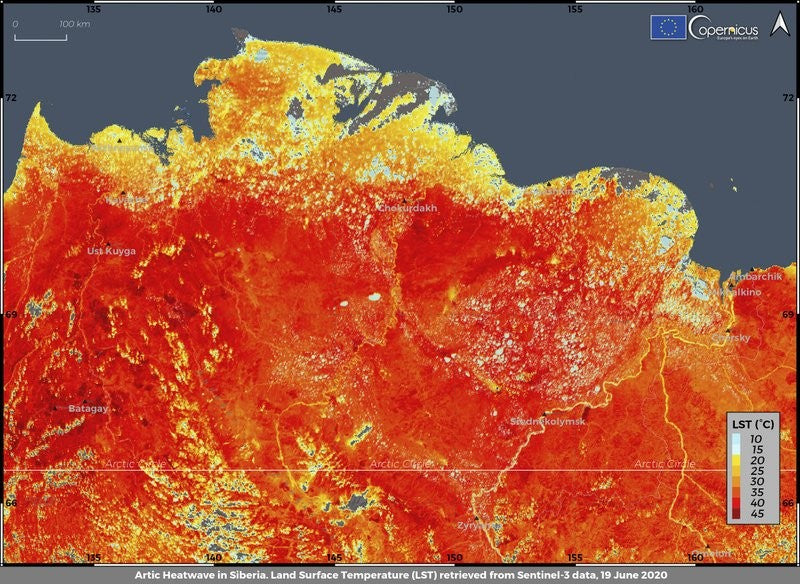
Remember Climate Change? The Arctic Just Hit 38 Degrees
Share
In true 2020 fashion, some not-so-cool stuff just gut-punched us again.
In case you don't know, the Arctic Circle is cold.
Really cold.
Particularly in the Siberian town of Verkoyansk, which is experiencing a prolonged heatwave that's even producing wildfires at an alarming rate.
Now, this particular region of Russia is known for extreme temperatures on both ends, but satellite thermal images are showing just how anomalous the heatwave really is...

"Temperatures above 30 degrees (Celsius) in July are not unusual, but obviously 38 degrees Celsius is exceptional," said the UN's World Meteorological Organisation spokeswoman Clare Nullis said.
She continued and described satellite data of the area as "just a mass of red" and that the situation was "striking and worrying".
The Russian Federal Service for Hydrometeorological and Environmental Monitoring (Roshydromet) said temperatures have been above 31 degrees Celsius since June 18 before peaking at 38 C on the 20th of June.
Their spokeswoman, Marina Makarova, said "This is the highest temperature ever measured at this station since measurements began", which was in the late 1800s.
The UN agency is referring to its archives to see if the 38-degree day qualifies as a record.
But...
As there was never any spikes, either way, there was no reason to even keep a record, until now.
"We are now actively considering setting up this new category. Climate Change isn't taking a break because of COVID. Temperatures carrying on rising. We are seeing continuing extreme weather events.
The Arctic Circle counts itself as one of the fastest-warming regions on Earth, warming at twice the global average.
This is exceptionally problematic as a large amount of permafrost is located in Siberia and the heat is releasing it at an alarming rate.
Siberian average temperatures rose sharply by over 10 C last month and contributed to our highest on record as a planet.
The comparative satellite data looks like this...

The past 12 months from May this year has seen a global rise of about 1.3 degrees Celsius, just shy of the cap of 1.5 C set by the Paris Agreement which stipulates warming must be kept "well below" 2C.
The heatwave across much of the Arctic Circle is situated in the same area where forest fires ravaged large regions. also fuelled by record heat.
The number of fires in northeastern Arctic Circle has continued to rise and shows no signs of stopping.
#Space_Aus
Psst! Clint the Intern here, just letting you guys know we're going through hoodies like M&Ms and there's no better way to spread ARSE than to wear it.Have a look here and join the club of enlightened Aussie thrusting into the deep unknown...See ya on the socials! - Clintern





